Effect of Morphological Modification over g-C3N4 on Photocatalytic Hydrogen Evolution Performance of g-C3N4-Pt Photocatalysts
Abstract
:1. Introduction
2. Results and Discussion
2.1. Physicochemical Properties
2.2. Morphological Properties
2.3. Optical Properties
2.4. Hydrogen Evolution Performance
3. Materials and Methods
3.1. Synthesis of CNx and CNx-Pt
3.2. Characterization
3.3. Photocatalytic Hydrogen Evolution Test
3.4. Photoelectrochemical Test
4. Conclusions
Supplementary Materials
Author Contributions
Funding
Data Availability Statement
Conflicts of Interest
References
- Wei, Z.; Liu, J.; Fang, W.; Xu, M.; Qin, Z.; Jiang, Z.; Shangguan, W. Photocatalytic hydrogen evolution with simultaneous antibiotic wastewater degradation via the visible-light-responsive bismuth spheres-g-C3N4 nanohybrid: Waste to energy insight. Chem. Eng. J. 2019, 358, 944–954. [Google Scholar] [CrossRef]
- Kosco, J.; Bidwell, M.; Cha, H.; Martin, T.; Howells, C.T.; Sachs, M.; Anjum, D.H.; Gonzalez Lopez, S.; Zou, L.; Wadsworth, A. Enhanced photocatalytic hydrogen evolution from organic semiconductor heterojunction nanoparticles. Nat. Mater. 2020, 19, 559–565. [Google Scholar] [CrossRef] [PubMed]
- Ruan, X.; Cui, X.; Jia, G.; Wu, J.; Zhao, J.; Singh, D.J.; Liu, Y.; Zhang, H.; Zhang, L.; Zheng, W. Intramolecular heterostructured carbon nitride with heptazine-triazine for enhanced photocatalytic hydrogen evolution. Chem. Eng. J. 2022, 428, 132579. [Google Scholar] [CrossRef]
- Han, C.; Su, P.; Tan, B.; Ma, X.; Lv, H.; Huang, C.; Wang, P.; Tong, Z.; Li, G.; Huang, Y. Defective ultra-thin two-dimensional g-C3N4 photocatalyst for enhanced photocatalytic H2 evolution activity. J. Colloid Interface Sci. 2021, 581, 159–166. [Google Scholar] [CrossRef] [PubMed]
- Kosco, J.; Gonzalez-Carrero, S.; Howells, C.T.; Zhang, W.; Moser, M.; Sheelamanthula, R.; Zhao, L.; Willner, B.; Hidalgo, T.C.; Faber, H. Oligoethylene Glycol Side Chains Increase Charge Generation in Organic Semiconductor Nanoparticles for Enhanced Photocatalytic Hydrogen Evolution. Adv. Mater. 2022, 34, 2105007. [Google Scholar] [CrossRef] [PubMed]
- Zhang, C.; Xie, C.; Gao, Y.; Tao, X.; Ding, C.; Fan, F.; Jiang, H.L. Charge separation by creating band bending in metal–organic frameworks for improved photocatalytic hydrogen evolution. Angew. Chem. Int. Ed. 2022, 61, e202204108. [Google Scholar]
- Yan, B.; Du, C.; Yang, G. Constructing Built-in Electric Field in Ultrathin Graphitic Carbon Nitride Nanosheets by N and O Codoping for Enhanced Photocatalytic Hydrogen Evolution Activity. Small 2020, 16, 1905700. [Google Scholar] [CrossRef]
- Qin, Y.; Li, H.; Lu, J.; Feng, Y.; Meng, F.; Ma, C.; Yan, Y.; Meng, M. Synergy between van der waals heterojunction and vacancy in ZnIn2S4/g-C3N4 2D/2D photocatalysts for enhanced photocatalytic hydrogen evolution. Appl. Catal. B Environ. 2020, 277, 119254. [Google Scholar] [CrossRef]
- Tang, S.; Xu, Y.-S.; Zhang, W.-D. Embedding Thiophene-Amide into g-C3N4 Skeleton with Induction and Delocalization Effects for High Photocatalytic H2 Evolution. Catalysts 2022, 12, 1043. [Google Scholar] [CrossRef]
- Zhang, Y.; Wang, G.; Jin, Z. An orderly assembled g-C3N4, rGO and Ni2P photocatalyst for efficient hydrogen evolution. Int. J. Hydrog. Energy 2019, 44, 10316–10327. [Google Scholar] [CrossRef]
- Zhu, Q.; Xu, Z.; Qiu, B.; Xing, M.; Zhang, J. Emerging cocatalysts on g-C3N4 for photocatalytic hydrogen evolution. Small 2021, 17, 2101070. [Google Scholar] [CrossRef] [PubMed]
- Sridharan, K.; Shenoy, S.; Kumar, S.G.; Terashima, C.; Fujishima, A.; Pitchaimuthu, S. Advanced two-dimensional heterojunction photocatalysts of stoichiometric and non-stoichiometric bismuth oxyhalides with graphitic carbon nitride for sustainable energy and environmental applications. Catalysts 2021, 11, 426. [Google Scholar] [CrossRef]
- Prasad, C.; Tang, H.; Liu, Q.; Bahadur, I.; Karlapudi, S.; Jiang, Y. A latest overview on photocatalytic application of g-C3N4 based nanostructured materials for hydrogen production. Int. J. Hydrog. Energy 2020, 45, 337–379. [Google Scholar] [CrossRef]
- Zhang, Y.; Thomas, A.; Antonietti, M.; Wang, X. Activation of carbon nitride solids by protonation: Morphology changes, enhanced ionic conductivity, and photoconduction experiments. J. Am. Chem. Soc. 2009, 131, 50–51. [Google Scholar] [CrossRef] [PubMed]
- Yang, X.; Chen, Z.; Xu, J.; Tang, H.; Chen, K.; Jiang, Y. Tuning the morphology of g-C3N4 for improvement of Z-scheme photocatalytic water oxidation. ACS Appl. Mater. Interfaces 2015, 7, 15285–15293. [Google Scholar] [CrossRef] [PubMed]
- Wang, Y.; Xiao, X.; Lu, M.; Xiao, Y. 3D network-like rGO-MoSe2 modified g-C3N4 nanosheets with Z-scheme heterojunction: Morphology control, heterojunction construct, and boosted photocatalytic performances. J. Alloys Compd. 2022, 897, 163197. [Google Scholar] [CrossRef]
- Zhao, S.; Zhang, Y.; Zhou, Y.; Wang, Y.; Qiu, K.; Zhang, C.; Fang, J.; Sheng, X. Facile one-step synthesis of hollow mesoporous g-C3N4 spheres with ultrathin nanosheets for photoredox water splitting. Carbon 2018, 126, 247–256. [Google Scholar] [CrossRef]
- Liu, Y.; Shen, S.; Li, Z.; Ma, D.; Xu, G.; Fang, B. Mesoporous g-C3N4 nanosheets with improved photocatalytic performance for hydrogen evolution. Mater. Charact. 2021, 174, 111031. [Google Scholar] [CrossRef]
- Zhang, J.; Wu, M.; He, B.; Wang, R.; Wang, H.; Gong, Y. Facile synthesis of rod-like g-C3N4 by decorating Mo2C co-catalyst for enhanced visible-light photocatalytic activity. Appl. Surf. Sci. 2019, 470, 565–572. [Google Scholar] [CrossRef]
- Guo, S.; Tang, Y.; Xie, Y.; Tian, C.; Feng, Q.; Zhou, W.; Jiang, B. P-doped tubular g-C3N4 with surface carbon defects: Universal synthesis and enhanced visible-light photocatalytic hydrogen production. Appl. Catal. B Environ. 2017, 218, 664–671. [Google Scholar] [CrossRef]
- Hoang, T.V.A.; Nguyen, P.A.; Choi, W.M.; Shin, E.W. The Growth of Extended Melem Units on g-C3N4 by Hydrothermal Treatment and Its Effect on Photocatalytic Activity of g-C3N4 for Photodegradation of Tetracycline Hydrochloride under Visible Light Irradiation. Nanomaterials 2022, 12, 2945. [Google Scholar] [CrossRef] [PubMed]
- Hoang, T.V.A.; Nguyen, T.K.A.; Dao, D.Q.; Nguyen, P.A.; Jeong, D.H.; Shin, E.W. Solvent Etching Process for Graphitic Carbon Nitride Photocatalysts Containing Platinum Cocatalyst: Effects of Water Hydrolysis on Photocatalytic Properties and Hydrogen Evolution Behaviors. Nanomaterials 2022, 12, 1188. [Google Scholar] [CrossRef] [PubMed]
- Liang, J.; Yang, X.; Fu, H.; Ran, X.; Zhao, C.; An, X. Integrating optimal amount of carbon dots in g-C3N4 for enhanced visible light photocatalytic H2 evolution. Int. J. Hydrogen Energy 2022, 47, 18032–18043. [Google Scholar] [CrossRef]
- Du, J.; Shen, Y.; Yang, F.; Wei, J.; Xu, K.; Li, X.; An, C. In-situ topology synthesis of defective MoN nanosheets/g-C3N4 2D/2D heterojunction photocatalyst for efficient H2 production. Appl. Surf. Sci. 2023, 608, 155199. [Google Scholar] [CrossRef]
- Dai, L.; Sun, F.; Fu, P.; Li, H. Enhanced photocatalytic hydrogen evolution and ammonia sensitivity of double-heterojunction g-C3N4/TiO2/CuO. RSC Adv. 2022, 12, 13381–13392. [Google Scholar] [CrossRef]
- Wu, X.; Chen, F.; Wang, X.; Yu, H. In situ one-step hydrothermal synthesis of oxygen-containing groups-modified g-C3N4 for the improved photocatalytic H2-evolution performance. Appl. Surf. Sci. 2018, 427, 645–653. [Google Scholar] [CrossRef]
- Che, H.; Che, G.; Zhou, P.; Liu, C.; Dong, H.; Li, C.; Song, N.; Li, C. Nitrogen doped carbon ribbons modified g-C3N4 for markedly enhanced photocatalytic H2-production in visible to near-infrared region. Chem. Eng. J. 2020, 382, 122870. [Google Scholar] [CrossRef]
- Ibrahim, A.; Memon, U.; Duttagupta, S.; Raman, R.S.; Sarkar, A.; Pendharkar, G.; Tatiparti, S. Hydrogen gas sensing of nano-confined Pt/g-C3N4 composite at room temperature. Int. J. Hydrog. Energy 2021, 46, 23962–23973. [Google Scholar] [CrossRef]
- Wang, Y.; Meng, X.-N.; Cao, J.-L. Rapid detection of low concentration CO using Pt-loaded ZnO nanosheets. J. Hazard. Mater. 2020, 381, 120944. [Google Scholar] [CrossRef]
- Yan, B.; Yang, G. Enhancing electron density of bulk g-C3N4 through phosphorus doping for promoting photocatalytic hydrogen evolution reaction. Appl. Surf. Sci. 2021, 570, 151186. [Google Scholar] [CrossRef]
- Zhang, P.; Zhang, J.; Wang, D.; Zhang, F.; Zhao, Y.; Yan, M.; Zheng, C.; Wang, Q.; Long, M.; Chen, C. Modification of g-C3N4 with hydroxyethyl cellulose as solid proton donor via hydrogen bond to enhance H2O2 production. Appl. Catal. B Environ. 2022, 318, 121749. [Google Scholar] [CrossRef]
- Zhang, X.; Li, T.; Hu, C.; Yan, X.; Qiao, K.; Chen, Z. Anion–Cation Co-Doped g-C3N4 Porous Nanotubes with Efficient Photocatalytic H2 Evolution Performance. Nanomaterials 2022, 12, 2929. [Google Scholar] [CrossRef] [PubMed]
- Wang, C.; Han, T.; Xin, C.; Miao, H. Synthesizing the High Surface Area g-C3N4 for Greatly Enhanced Hydrogen Production. Catalysts 2021, 11, 832. [Google Scholar] [CrossRef]
- Tao, J.; Yang, T.; Liu, Q.; Hu, J.; Tang, H. Designing 0D/2D CdS nanoparticles/g-C3N4 nanosheets heterojunction as efficient photocatalyst for improved H2-evolution. Surf. Interfaces 2021, 26, 101312. [Google Scholar]
- Xing, C.; Yu, G.; Chen, T.; Liu, S.; Sun, Q.; Liu, Q.; Hu, Y.; Liu, H.; Li, X. Perylenetetracarboxylic diimide covalently bonded with mesoporous g-C3N4 to construct direct Z-scheme heterojunctions for efficient photocatalytic oxidative coupling of amines. Appl. Catal. B Environ. 2021, 298, 120534. [Google Scholar] [CrossRef]
- Saka, C. Surface modification with oxygen doping of g-C3N4 nanoparticles by carbon vacancy for efficient dehydrogenation of sodium borohydride in methanol. Fuel 2022, 310, 122444. [Google Scholar] [CrossRef]
- Zhong, H.-X.; Zhang, Q.; Wang, J.; Zhang, X.-B.; Wei, X.-L.; Wu, Z.-J.; Li, K.; Meng, F.-L.; Bao, D.; Yan, J.-M. Engineering ultrathin g-C3N4 quantum dots on graphene as a metal-free water reduction electrocatalyst. ACS Catal. 2018, 8, 3965–3970. [Google Scholar] [CrossRef]
- Shi, Y.; Chen, J.; Mao, Z.; Fahlman, B.D.; Wang, D. Construction of Z-scheme heterostructure with enhanced photocatalytic H2 evolution for g-C3N4 nanosheets via loading porous silicon. J. Catal. 2017, 356, 22–31. [Google Scholar] [CrossRef]
- Dao, D.Q.; Anh Nguyen, T.K.; Kang, S.G.; Shin, E.W. Engineering oxidation states of a platinum cocatalyst over chemically oxidized graphitic carbon nitride photocatalysts for photocatalytic hydrogen evolution. ACS Sustain. Chem. Eng. 2021, 9, 14537–14549. [Google Scholar] [CrossRef]
- Lu, N.; Liu, N.; Hui, Y.; Shang, K.; Jiang, N.; Li, J.; Wu, Y. Characterization of highly effective plasma-treated g-C3N4 and application to the photocatalytic H2O2 production. Chemosphere 2020, 241, 124927. [Google Scholar] [CrossRef]
- Ma, R.; Guo, J.; Wang, D.; He, M.; Xun, S.; Gu, J.; Zhu, W.; Li, H. Preparation of highly dispersed WO3/few layer g-C3N4 and its enhancement of catalytic oxidative desulfurization activity. Colloids Surf. A Physicochem. Eng. Asp. 2019, 572, 250–258. [Google Scholar] [CrossRef]
- Shi, F.; Wu, W.; Chen, J.; Xu, Q. Atomic-layered Pt clusters on S-vacancy rich MoS2−x with high electrocatalytic hydrogen evolution. Chem. Commun. 2021, 57, 7011–7014. [Google Scholar] [CrossRef] [PubMed]
- Liu, H.; Mei, Q.; Li, S.; Yang, Y.; Wang, Y.; Liu, H.; Zheng, L.; An, P.; Zhang, J.; Han, B. Selective hydrogenation of unsaturated aldehydes over Pt nanoparticles promoted by the cooperation of steric and electronic effects. Chem. Commun. 2018, 54, 908–911. [Google Scholar] [CrossRef] [PubMed]
- Liu, Y.; Chen, G.; Chen, J.; Niu, H. Excellent Catalytic Performance of Ce–MOF with Abundant Oxygen Vacancies Supported Noble Metal Pt in the Oxidation of Toluene. Catalysts 2022, 12, 775. [Google Scholar] [CrossRef]
- Ho, Y.-A.; Wang, S.-Y.; Chiang, W.-H.; Nguyen, V.-H.; Chiu, J.-L.; Wu, J.C. Moderate-temperature catalytic incineration of cooking oil fumes using hydrophobic honeycomb supported Pt/CNT catalyst. J. Hazard. Mater. 2019, 379, 120750. [Google Scholar] [CrossRef]
- Li, J.; Shen, B.; Hong, Z.; Lin, B.; Gao, B.; Chen, Y. A facile approach to synthesize novel oxygen-doped g-C3N4 with superior visible-light photoreactivity. Chem. Commun. 2012, 48, 12017–12019. [Google Scholar] [CrossRef]
- Vinesh, V.; Ashokkumar, M.; Neppolian, B. rGO supported self-assembly of 2D nano sheet of (g-C3N4) into rod-like nano structure and its application in sonophotocatalytic degradation of an antibiotic. Ultrason. Sonochemistry 2020, 68, 105218. [Google Scholar] [CrossRef]
- Cao, S.; Yu, J. g-C3N4-based photocatalysts for hydrogen generation. J. Phys. Chem. Lett. 2014, 5, 2101–2107. [Google Scholar] [CrossRef]
- Zhu, J.; Xiao, P.; Li, H.; Carabineiro, S.A. Graphitic carbon nitride: Synthesis, properties, and applications in catalysis. ACS Appl. Mater. Interfaces 2014, 6, 16449–16465. [Google Scholar] [CrossRef]
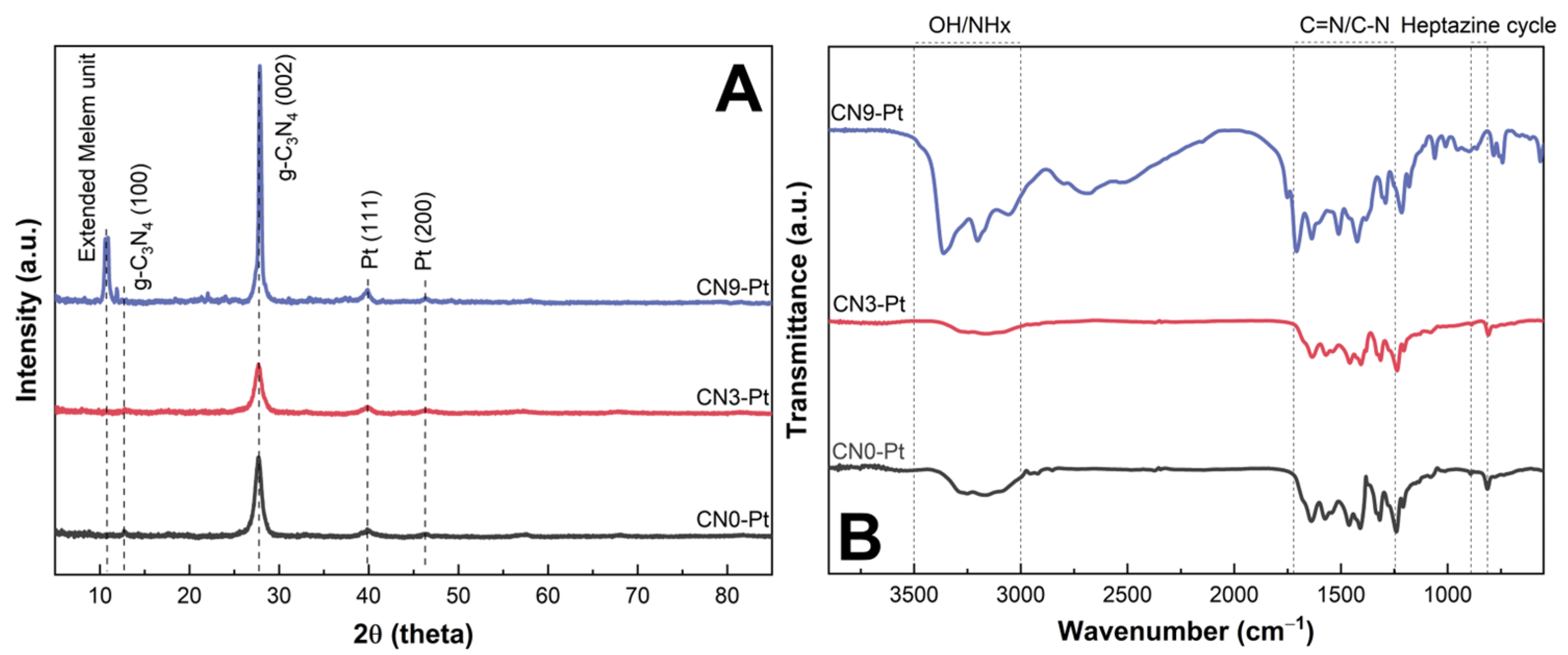

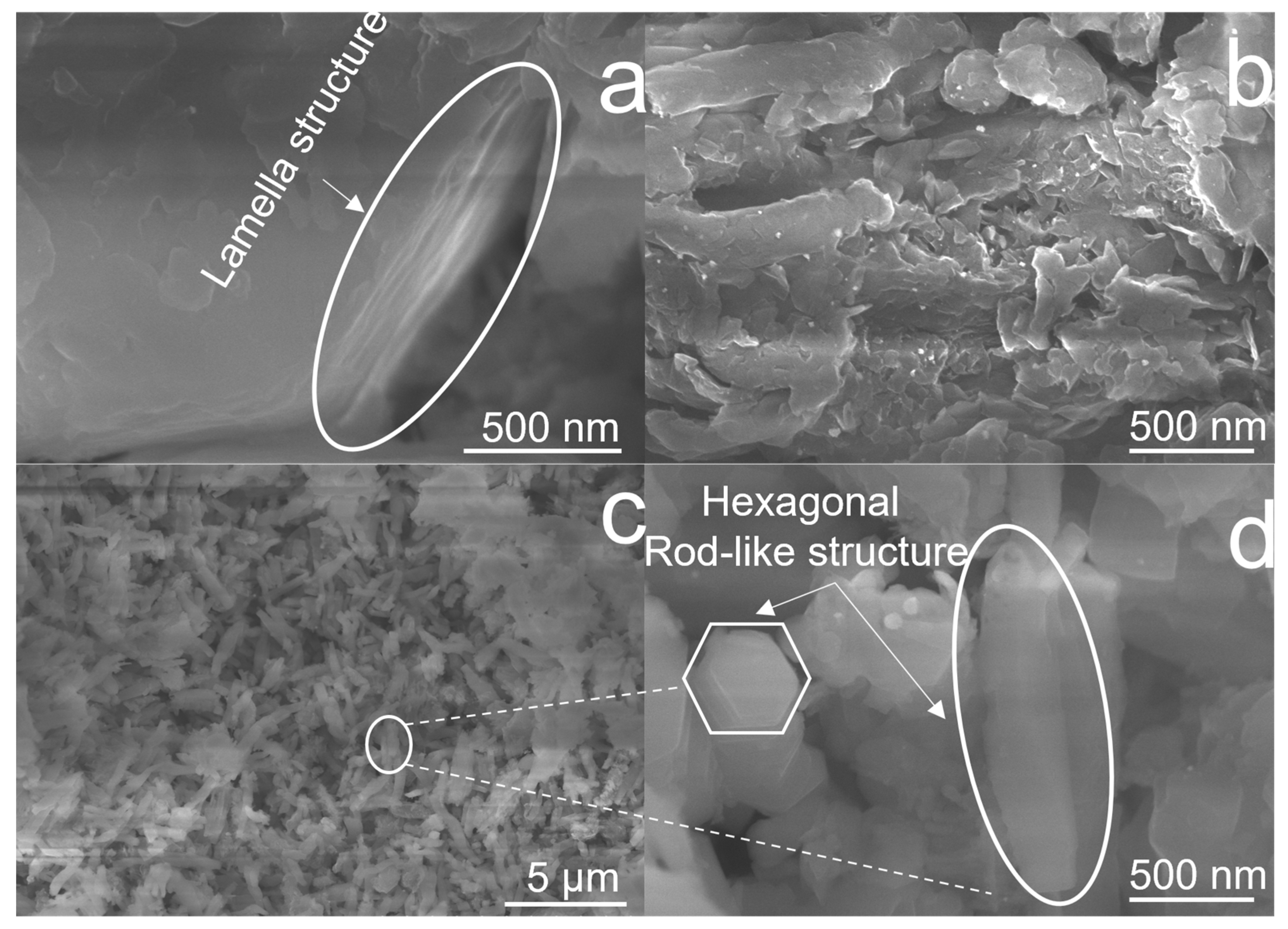
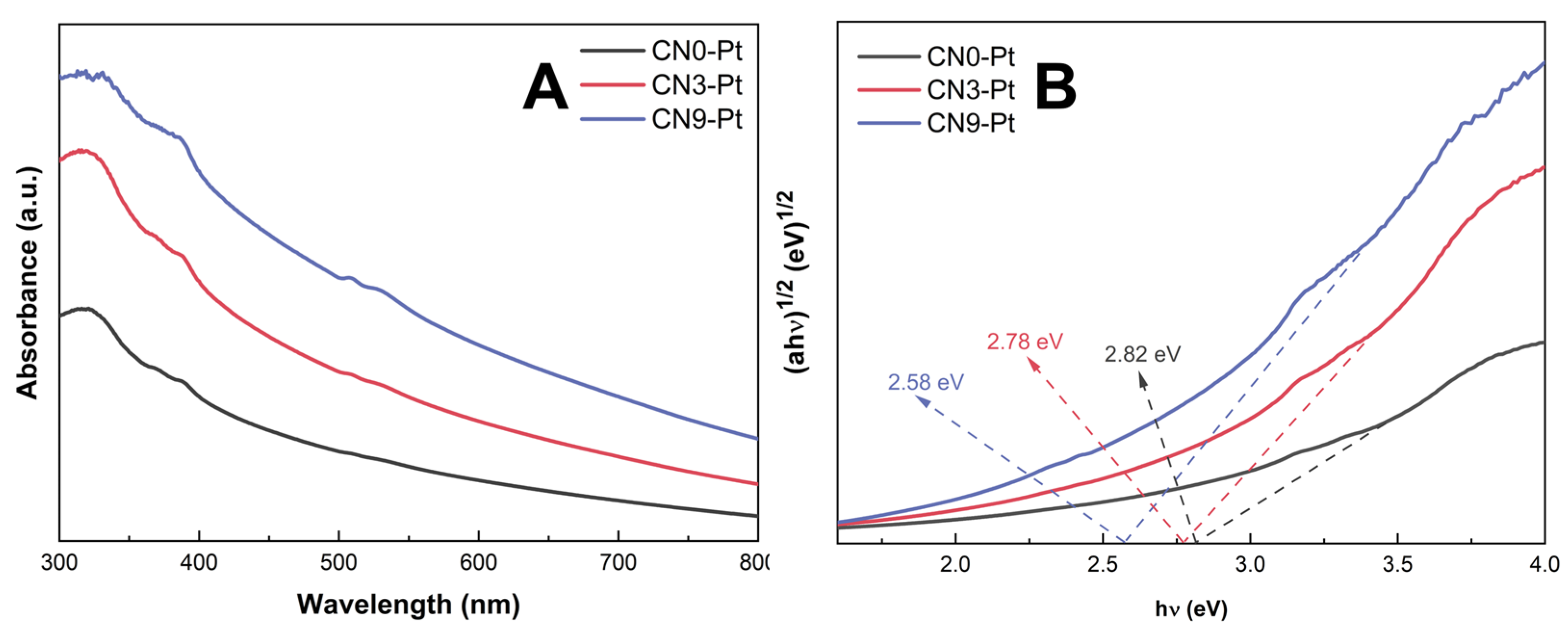
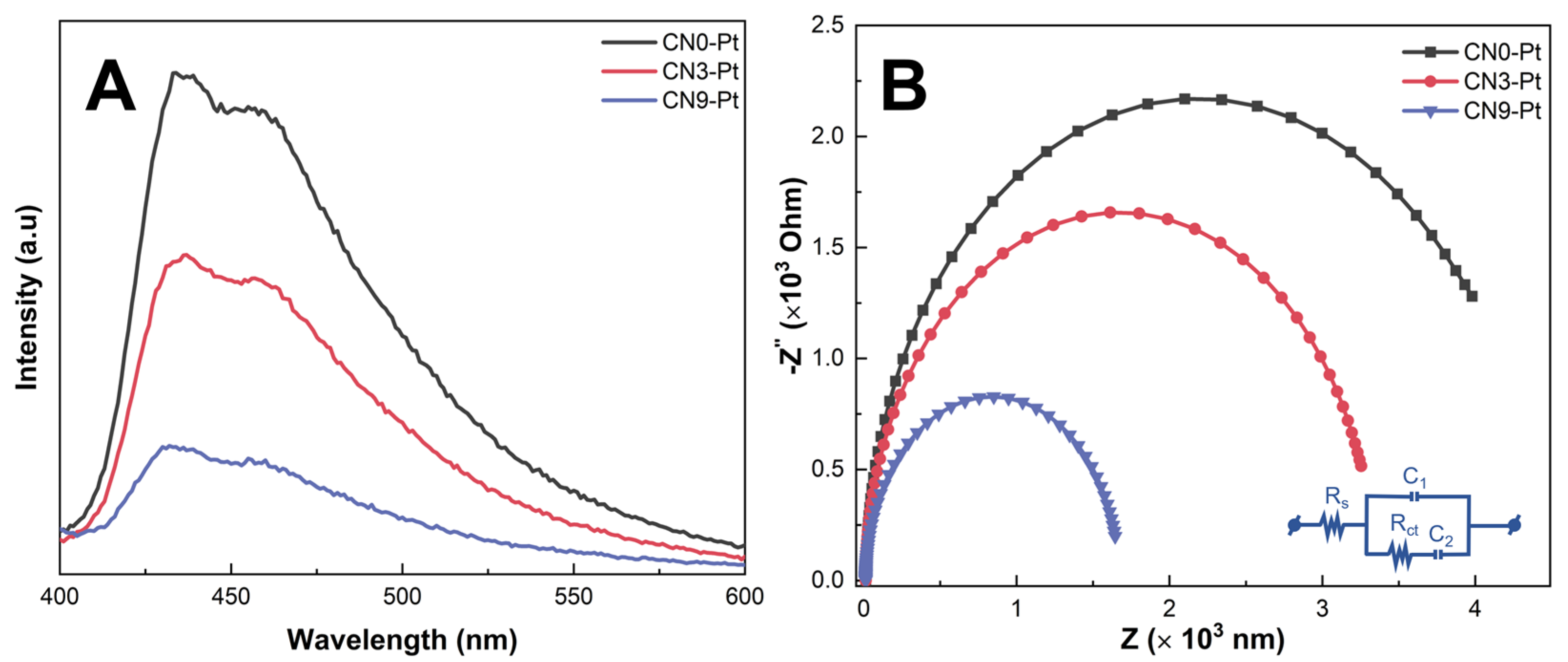

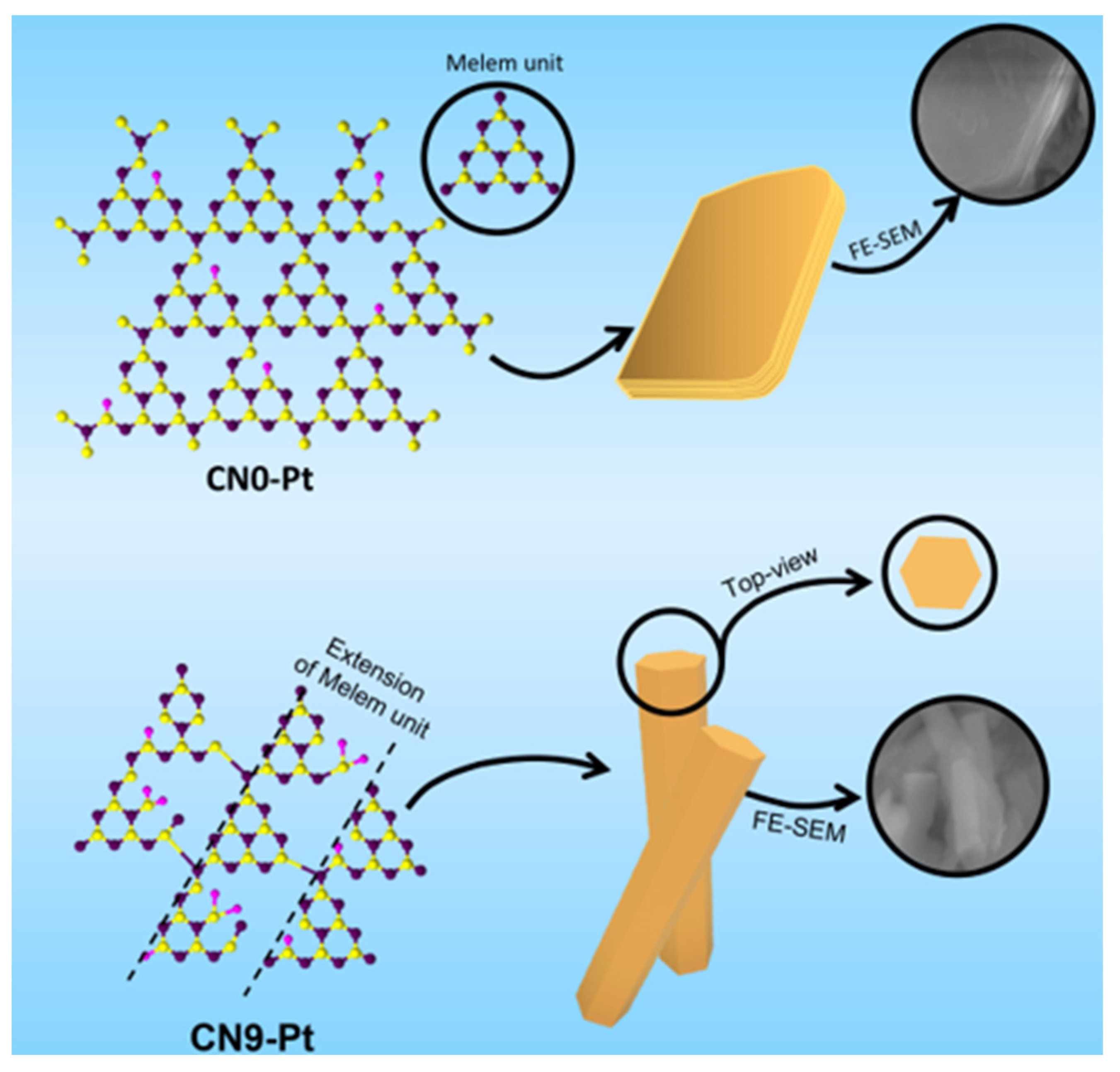
| Samples | wt.% | C/N | Atomic % | ||||||
|---|---|---|---|---|---|---|---|---|---|
| N 1 | C 1 | H 1 | O 1 | Pt 2 | C = O 3 | −OH 3 | −COOH 3 | ||
| CN0-Pt | 61.19 | 36.71 | 1.51 | 6.33 | 1.34 | 0.60 | 71.57 | 12.90 | 13.86 |
| CN3-Pt | 58.87 | 33.96 | 1.78 | 9.22 | 1.68 | 0.58 | 38.89 | 17.90 | 25.85 |
| CN9-Pt | 51.77 | 29.06 | 2.91 | 17.13 | 0.85 | 0.56 | 25.13 | 2.48 | 63.46 |
Disclaimer/Publisher’s Note: The statements, opinions and data contained in all publications are solely those of the individual author(s) and contributor(s) and not of MDPI and/or the editor(s). MDPI and/or the editor(s) disclaim responsibility for any injury to people or property resulting from any ideas, methods, instructions or products referred to in the content. |
© 2023 by the authors. Licensee MDPI, Basel, Switzerland. This article is an open access article distributed under the terms and conditions of the Creative Commons Attribution (CC BY) license (https://creativecommons.org/licenses/by/4.0/).
Share and Cite
Hoang, T.V.A.; Nguyen, P.A.; Shin, E.W. Effect of Morphological Modification over g-C3N4 on Photocatalytic Hydrogen Evolution Performance of g-C3N4-Pt Photocatalysts. Catalysts 2023, 13, 92. https://doi.org/10.3390/catal13010092
Hoang TVA, Nguyen PA, Shin EW. Effect of Morphological Modification over g-C3N4 on Photocatalytic Hydrogen Evolution Performance of g-C3N4-Pt Photocatalysts. Catalysts. 2023; 13(1):92. https://doi.org/10.3390/catal13010092
Chicago/Turabian StyleHoang, Thi Van Anh, Phuong Anh Nguyen, and Eun Woo Shin. 2023. "Effect of Morphological Modification over g-C3N4 on Photocatalytic Hydrogen Evolution Performance of g-C3N4-Pt Photocatalysts" Catalysts 13, no. 1: 92. https://doi.org/10.3390/catal13010092
APA StyleHoang, T. V. A., Nguyen, P. A., & Shin, E. W. (2023). Effect of Morphological Modification over g-C3N4 on Photocatalytic Hydrogen Evolution Performance of g-C3N4-Pt Photocatalysts. Catalysts, 13(1), 92. https://doi.org/10.3390/catal13010092






